Written by Ryan Farris
May 05, 2025 - 7 min read
2025 Water Heater Guide: Tank vs. Tankless Explained
Your water heater just failed, or maybe you're planning a smart upgrade. Choosing the right one is a big decision that impacts your home's comfort and energy bills for years. This guide simplifies everything, breaking down the key differences between traditional tanks and modern tankless heaters to help you find the perfect solution.
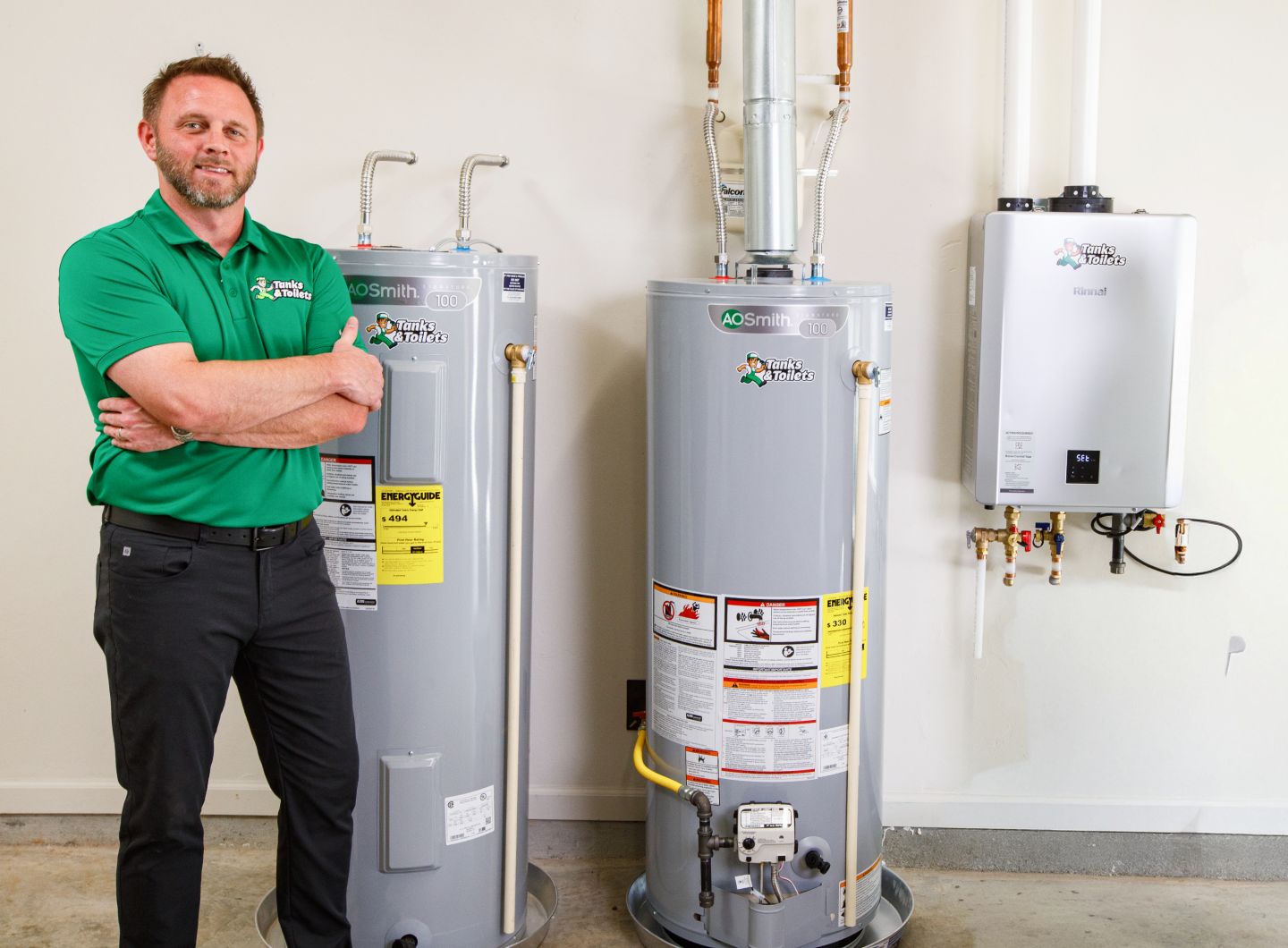
Key Factors to Consider Before Buying a Water Heater
Before choosing a new water heater, think through your home’s energy source, performance needs, and available space. Use this guide to compare your best options
- Fuel Type: Choose between electric, natural gas, or propane power sources.
- Water Heater Type: Compare tank and tankless systems for cost and efficiency.
- Performance: Comparing hot water supply, flow rate, and energy efficiency.
- Space Requirements: A bulky tank vs. a compact unit. See what fits your space.
- Frequently Asked Questions: Find expert answers to help you pick the best water heater.
Understanding these five factors is the key to choosing a water heater that will serve your home reliably for years to come.
1. Understanding Your Fuel Type
The first and most important factor in choosing a new water heater is knowing which fuel source your home uses. Most homes are equipped for either natural gas (or propane) or electricity, and this will determine the right model for you. Each option has distinct advantages in long-term cost, performance, and installation.
Natural Gas & Propane Water Heaters
Natural gas and propane are the most common and cost-effective fuel sources for water heating in homes with an existing gas line. This versatile fuel powers two excellent types of water heaters: traditional tanks and modern tankless units. A gas tank water heater uses a burner to keep a large reservoir of water consistently hot and ready for immediate use. This method provides a fast "recovery rate," meaning the tank reheats quickly after heavy use. A gas tankless water heater uses a powerful, high-efficiency burner that ignites only when you need hot water. It heats the water instantly as it flows through the unit, providing an endless supply and saving considerable energy by not heating water when it's not being used. Whether you prefer the reliability of a traditional tank or the long-term savings of a tankless upgrade, natural gas offers a powerful and efficient solution.
- Heating Speed: Rapid recovery and higher output
- Operating Cost: Often cheaper over time than electric
- Requirements: Venting, gas line, proper installation location
- Best For: High-demand households or those with existing gas connections
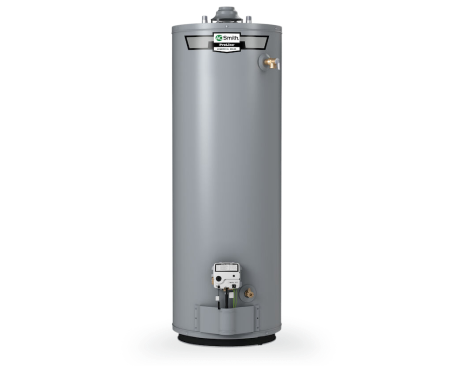
ProLine® Hot Water Tank
Our expertly chosen tank model. A reliable, commercial-grade unit built for durability and powerful performance.
- Energy-Saving Ultra-Low NOx Design
- 84-Gallon First-Hour Rating for high-demand homes
- Durable build backed by an 8-Year Warranty
From $2,199 all-inclusive pricing
Shop Now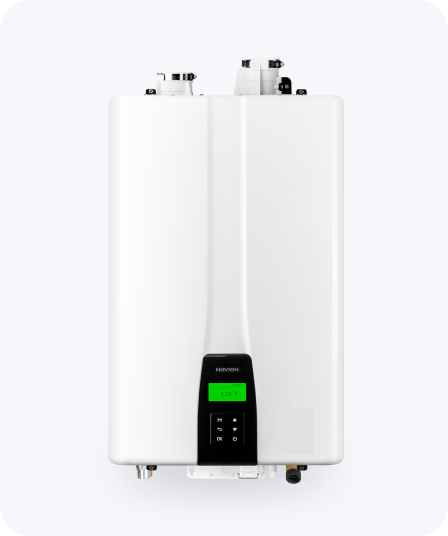

Navien Super High Efficiency Tankless Water Heater
The ultimate upgrade for endless hot water, long-term energy savings, and a 15+ year expected lifespan.
- Endless Hot Water Supply
- Compact, Space-Saving Design
- Maximum Energy Efficiency
- 15-Year Warranty for long-lasting peace of mind
From $3,899 all-inclusive pricing
Shop NowElectric Water Heaters
Electric water heaters are a versatile and reliable option, especially in homes without access to natural gas. They use internal heating elements to warm the water, much like an electric kettle. Their installation is often simpler and more flexible as they don't require the same venting as gas models. While modern electric units are very efficient, their day-to-day operating cost can be higher depending on local electricity rates.
- Installation: Simple and compatible with most homes
- Efficiency: Excellent energy-to-heat conversion
- Drawbacks: Can be slower to heat water and may be costlier to operate long term
- Ideal For: Homes without gas lines or those prioritizing low upfront cost
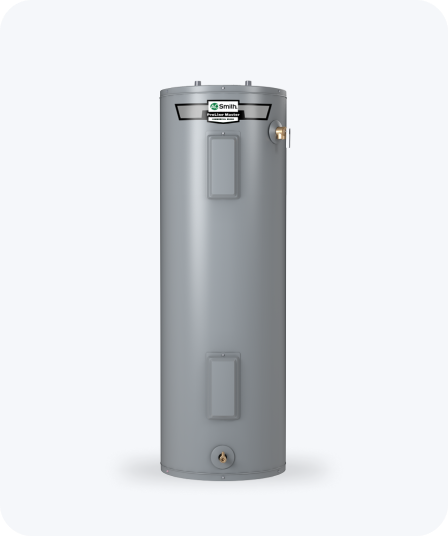
ProLine® Electric Hot Water Tank
Traditional hot water storage tank system Multiple Options Available
- Dual 4,500-Watt Incoloy™ Heating Elements
- 62-Gallon First-Hour Rating for steady hot water
- 8-Year Limited Warranty for peace of mind
From $2,199 all-inclusive pricing
Shop Now2. Water Heater Type: The Main Decision
This is the most significant choice you'll make. A traditional storage tank offers proven reliability at a lower upfront cost, while a modern tankless heater provides endless hot water and long-term efficiency. Let's break down the differences.
Traditional Storage Tank Water Heaters
This is the most common type of water heater in the United States. It features an insulated tank that heats and stores a large reservoir of water (typically 40-50 gallons), keeping it hot and ready for immediate use. When you turn on a faucet, hot water is drawn from the top of the tank as cold water enters the bottom to be heated. They are a dependable and cost-effective solution for most families.
- How They Work: Heats and stores a large volume of water in an insulated tank
- Typical Capacity: Our standard is a 50-gallon model, ideal for 3-5 person households
- Best For: Budget-conscious homeowners and those needing a reliable, straightforward replacement
- Pros: Lower all-inclusive installation cost, simple and proven technology
- Cons: Can run out of hot water, constant energy use (standby heat loss), large size

ProLine® Hot Water Tank
Our expertly chosen tank model. A reliable, commercial-grade unit built for durability and powerful performance.
- Enhanced energy efficiency
- Quick recovery rate for faster heating
- Durable build backed by an 8-Year Warranty
From $2,199 all-inclusive pricing
Shop NowModern Tankless Water Heaters (On-Demand)
Tankless water heaters, also known as on-demand heaters, are a major upgrade in both convenience and efficiency. Instead of storing water, they use a powerful heat exchanger to heat water instantly as it flows through the unit. This means you only use energy precisely when you need hot water, and the supply of that hot water is literally endless.
- How They Work: Heats water instantly on-demand as it passes through the unit
- Typical Capacity: Unlimited. A powerful 10.1 GPM (Gallons Per Minute) flow rate can easily support multiple showers and appliances running at the same time
- Best For: Busy households, larger families, and anyone prioritizing energy savings and long-term value
- Pros: Endless hot water, lower monthly energy bills, 15+ year lifespan, compact space-saving design
- Cons: Higher all-inclusive installation cost


Navien Super High Efficiency Tankless Water Heater
The ultimate upgrade for endless hot water, long-term energy savings, and a 15+ year expected lifespan.
- Endless Hot Water Supply
- Compact, Space-Saving Design
- Maximum Energy Efficiency
- 15-Year Warranty for long-lasting peace of mind
From $3,899 all-inclusive pricing
Shop Now3. Performance: What to Expect in Your Home
Performance isn't just technical specs; it's about your daily routine. We compare our heater types on what matters most: how much hot water you get, how many things you can run at once, and the long-term energy cost.
Traditional
Gas / Propane Hot Water Tank
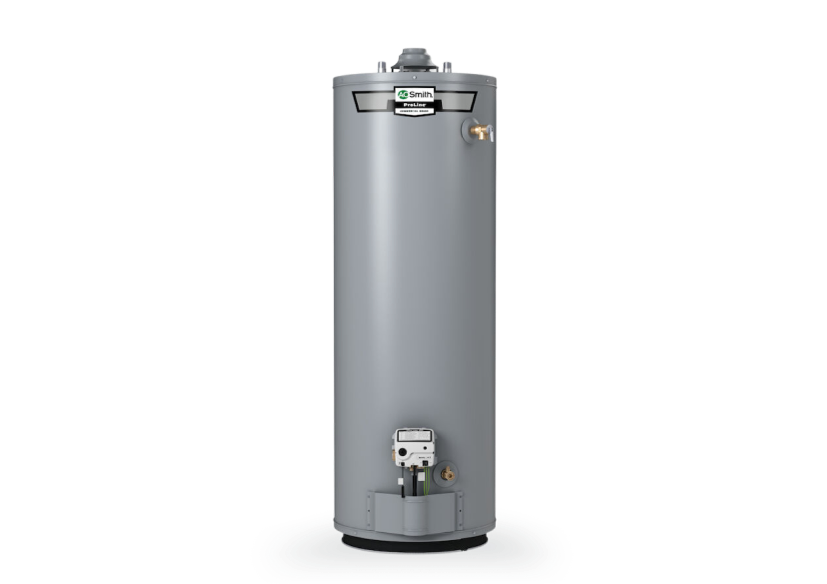
34.7 minutes
Single shower length
Up to 4 showers
Back-to-back
3 showers
At the same time
81 gallons
Max tub size
$237 / year
Estimated energy cost
Traditional
Electric Hot Water Tank

22 minutes
Single shower length
2.7 showers
Back-to-back
2.7 showers
At the same time
69 gallons
Max tube size
$432 / year
Estimated energy cost
Upgrade
Tankless Gas / Propane Water Heater

Unlimited
Single shower length
Unlimited showers
Back-to-back
Up to 3 showers
At the same time
Unlimited
Max tub size
$193 / year
Estimated energy cost
4. Space & Location: A Visual Comparison
One of the most dramatic differences between a tank and a tankless water heater is the physical space they occupy. It's not just the size of the unit itself, but the entire installation footprint. Modern, high-efficiency models can also be larger than the older units they replace, making space a critical consideration.
Traditional Storage Tank A traditional 50-gallon tank is a bulky appliance. When you add the required stand, drain pan, and necessary clearance for venting and service, it can easily occupy 9-12 square feet of valuable floor space, often requiring a dedicated utility closet.
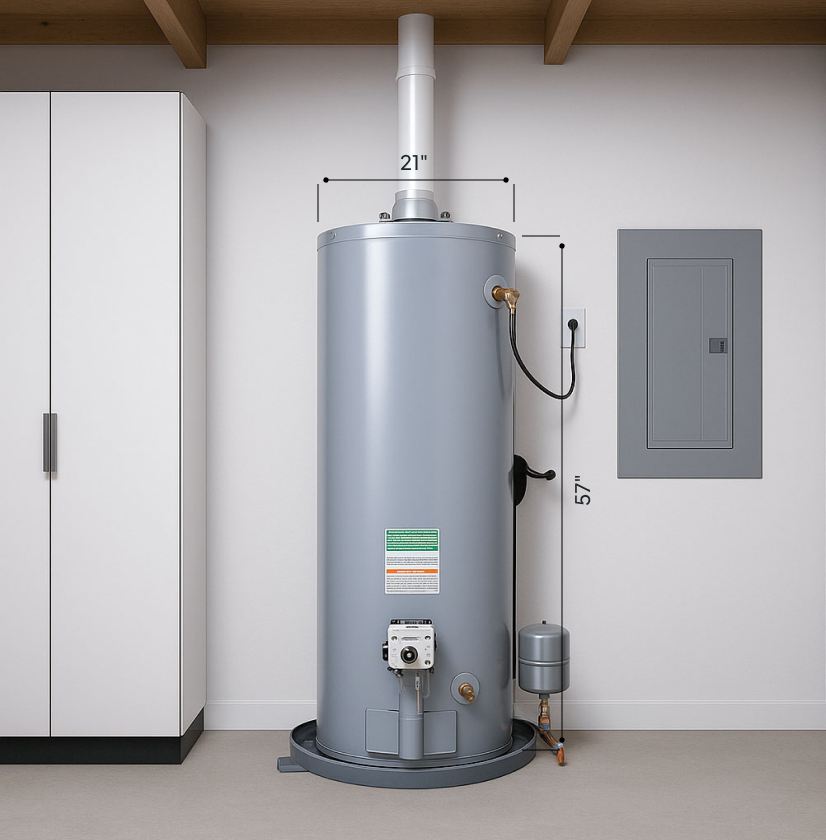
Modern Tankless Unit A tankless heater is a game-changer for space. About the size of a small suitcase, it mounts directly to the wall, freeing up the entire 10-12 square feet of floor space that a tank would use. This reclaimed area is perfect for storage or a cleaner, more open look.
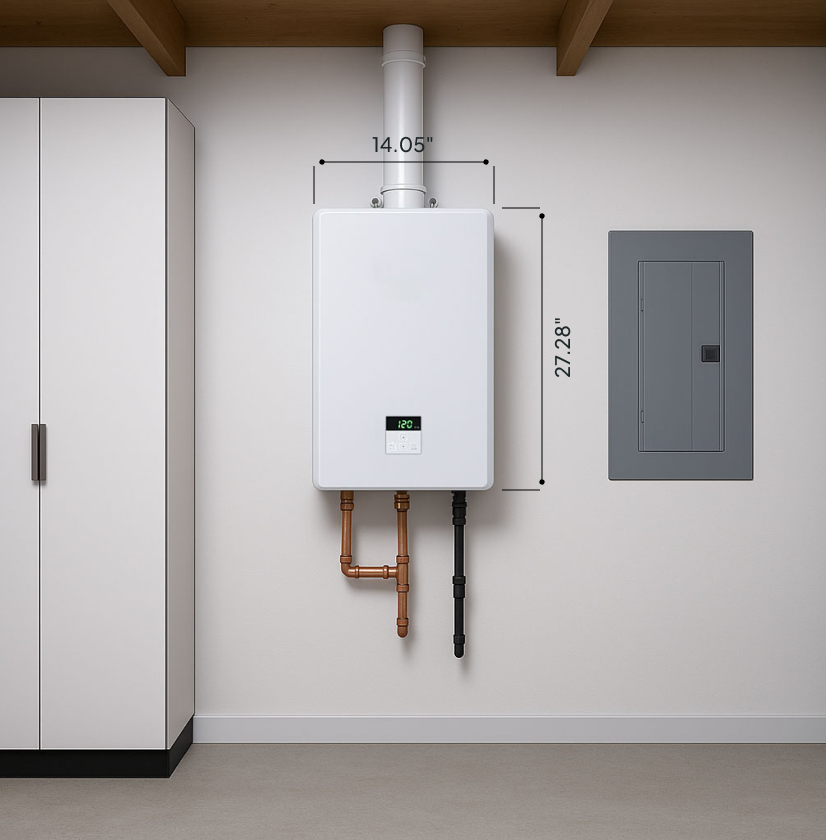
Did You Know?
Upgrading to a tankless water heater is one of the fastest ways to reclaim an entire closet's worth of storage. It's a functional upgrade that provides endless hot water and a sleek, modern aesthetic for your home.
5. Frequently Asked Questions
Is a tankless water heater really cheaper in the long run?
That's the most important financial question to ask when choosing a new water heater. For many homeowners, especially those planning to stay in their home for years to come, the answer is yes, a tankless water heater is significantly cheaper in the long run. While the initial all-inclusive installation cost is higher than a traditional tank, the long-term savings are realized in two key areas: 1. Lower Monthly Energy Bills A traditional tank heater has to constantly use energy (gas or electric) to keep its 40-50 gallon reservoir of water hot, 24/7. This is called "standby heat loss," and it means you're paying to heat water even when you're not using it. A tankless heater, by contrast, only uses a significant amount of energy when you turn on a hot water tap. This on-demand efficiency can reduce the water heating portion of your utility bill by 25% or more each year, providing consistent savings for the entire life of the unit. 2. Nearly Double the Lifespan This is a critical factor in the total cost of ownership. A quality tank water heater typically lasts about 8-12 years before needing to be replaced. A properly maintained tankless water heater can last 20 years or more. Over two decades, you would likely need to purchase and install two traditional tank heaters in the same timespan you would own just one tankless unit. When you factor in the cost of that second replacement, the long-term financial benefit of a tankless system becomes very clear. The Verdict: While the upfront investment is greater, the combination of substantial monthly energy savings and a much longer lifespan means a tankless water heater often has a lower total cost of ownership, making it a smart financial investment for your home.
What's the average lifespan of a tank vs. a tankless water heater?
Understanding the lifespan of a water heater is key to calculating its true long-term value. A traditional tank and a modern tankless unit have significantly different life expectancies due to how they are designed and how they operate. Traditional Tank Water Heater: 8-12 Year Lifespan A quality tank water heater, like the models we install, typically provides 8 to 12 years of reliable service. The main factor that limits a tank's lifespan is that it constantly stores a large volume of water. Over the years, minerals and sediment from the water supply naturally settle at the bottom. This buildup can reduce efficiency, put stress on the tank, and eventually lead to corrosion and leaks, which is the most common reason a tank heater fails. Tankless Water Heater: 20+ Year Lifespan A tankless water heater is engineered for longevity, with an expected lifespan of 20 years or more. Because it doesn't store water, it isn't susceptible to the same level of constant corrosion and sediment buildup. The key to this long life is simple annual maintenance (called descaling) to keep the internal parts clean. The high-quality models we install are backed by 15-year warranties on their core components (the heat exchanger), underscoring their durability. While a tank heater provides years of dependable service, the 20+ year lifespan of a tankless unit means you could avoid an entire replacement cycle, making it a powerful long-term investment.
Can a tankless water heater keep up with a large, busy family?
Yes, absolutely. In fact, large, busy families are the perfect candidates for a modern tankless water heater. While a traditional tank heater can be drained and run out of hot water, a tankless unit is specifically designed to provide an endless supply, even during periods of the highest demand. The key performance metric is called "flow rate," which is measured in Gallons Per Minute (GPM). This tells you how much hot water the unit can produce at any given moment. The powerful tankless model we install delivers an impressive 9 to 10 GPM. What does that mean for your family in real-world terms? A standard showerhead uses about 2.5 GPM. Our unit's capacity means you could comfortably run three showers simultaneously and still have hot water to spare for a faucet. It can easily handle the morning rush, running the dishwasher, and a load of laundry all at once without breaking a sweat. It’s a true game-changer for busy households, eliminating the need to schedule showers or worry about being the last one in and getting a cold surprise.
Is there a long wait for hot water with a tankless heater?
That’s a great question. While there can be a short delay, it's often the same or even less than the wait you’d experience with a traditional tank. The "wait time" for hot water isn't about how fast the unit heats the water—it's about how long it takes for that hot water to travel through your home's pipes to reach your faucet or shower. Here's how it works: With a tankless heater, the process is instant. The moment you turn on a hot water tap, the unit ignites and begins heating. There's a brief 2-3 second delay for this to happen, plus the travel time through the pipes. With a traditional tank, the hot water is already made, but you still have to wait for it to travel from the tank through the exact same pipes to your faucet. Many modern tankless heaters, including the high-end Navien models we install, have an even better solution: a built-in recirculation pump. This feature keeps a small amount of hot water circulating in your pipes, so it's available almost instantly when you turn on the tap. This virtually eliminates the wait, giving you the best of both worlds: instant and endless hot water. So, while a very short delay is part of any plumbing system, the advanced technology in the tankless units we use makes the wait time minimal and often superior to that of an old tank heater.
What is the recommended maintenance for each type of water heater?
All water heaters, regardless of type, benefit from simple, regular maintenance to ensure a long, efficient service life and to keep your manufacturer's warranty valid. For a Traditional Tank Water Heater, maintenance focuses on combating sediment and corrosion. It is recommended to flush the tank annually to remove sediment buildup, as the warranty may not cover failures due to this. Additionally, the anode rod is a consumable maintenance part that should be inspected every few years and replaced when depleted to prevent tank rust. For a Tankless Water Heater, the most important task is annual 'descaling' to remove mineral buildup from the internal heat exchangers. The manufacturer recommends this annual service to ensure many years of proper function. Neglecting this can reduce efficiency and may void the warranty. Periodically cleaning the air and water filters is also recommended to keep the unit running at peak performance. Performing this routine maintenance is the best way to protect your investment and ensure you get the full, efficient lifespan out of your new water heater.
How complex is the installation when switching from a tank to a tankless?
That's an important question, as switching from a tank to a tankless water heater is a significant upgrade and a more complex installation than a simple tank-for-tank swap. It involves several key modifications to your home's systems to ensure safety and peak performance. New Venting System A high-efficiency tankless heater requires its own dedicated, sealed venting system. This typically involves running two new PVC pipes—one for fresh air intake and one for exhaust. This is a major difference from the single metal vent pipe used by most traditional tanks and often requires creating new, clean penetrations through an exterior wall. Gas Line Upgrade To heat water instantly, a tankless unit requires a much higher volume of gas at one time than a tank heater. In almost every conversion, this requires our experts to upgrade a section of your gas line to a larger diameter pipe. This is a critical step to ensure the heater has enough fuel to perform correctly without errors. Plumbing & Condensate Line Our experts will also reroute your hot and cold water lines to the new, compact, wall-mounted location of the tankless unit. Additionally, a new condensate drain line must be installed to safely manage the moisture that is a natural byproduct of the high-efficiency heating process. While this process is complex, it is all handled by our experts and is fully included in our all-inclusive tankless upgrade price. You don't have to worry about surprise charges for these necessary and critical upgrades.
Can I switch from a tank to a tankless water heater?
Yes, absolutely! Switching from a traditional tank to a modern tankless water heater is one of the most popular and valuable upgrades you can make for your home. It's a fantastic way to improve your daily comfort, increase your home's energy efficiency, and free up valuable storage space. The process of converting from a tank to a tankless system is a job for a professional, as it involves several key upgrades to your home's existing infrastructure. Our experts typically need to install a new, dedicated venting system for the high-efficiency unit, upgrade a section of the gas line to provide adequate fuel for the powerful on-demand burner, and reroute the plumbing to the new, wall-mounted location. While that may sound complex, we make it incredibly simple. Our all-inclusive Tankless Heater Upgrade package is specifically designed for this conversion. The single, upfront price you see on our website includes the new high-efficiency unit, all the necessary gas line and venting upgrades, professional installation by our expert team, and the removal and disposal of your old tank. We handle all the complexity so you can enjoy the benefits without the hassle. So, if you're ready for endless hot water and long-term savings, making the switch is not only possible—it's simple with our turnkey service.
How do I know if it’s time to replace my old water heater?
It can be hard to know if your water heater needs a simple repair or if it's time for a full replacement. While some issues can be fixed, an older unit showing signs of failure is often best replaced to avoid a sudden, catastrophic leak. The first thing to check is its age. Most traditional tank water heaters have a lifespan of 8-12 years. If yours is in that range or older, it's time to start paying close attention to these 4 telltale signs that it's time for a replacement: 1. Rusty or Discolored Water If the hot water coming from your faucets has a brownish, rusty tint, it's a strong indicator that the inside of your water heater tank is corroding. Once rust starts, a leak is often not far behind. 2. Rumbling or Popping Noises As a water heater ages, sediment from your water supply builds up and hardens at the bottom of the tank. When the burner or element turns on, it has to heat the water through this layer of sediment, which can cause loud rumbling, popping, or banging noises. This is a sign of inefficiency and major stress on the tank. 3. Visible Leaks or Moisture This is the most urgent sign. If you see any water pooling around the base of your water heater, it likely means the inner tank has failed. This is an emergency, and the unit needs to be replaced immediately to prevent significant water damage. 4. Not Enough Hot Water If you find yourself running out of hot water much faster than you used to, or if the water just isn't getting as hot as it should, it's a clear sign the unit is losing its heating capability and nearing the end of its functional life. If you're noticing any of these issues with an older tank, a replacement is the most reliable and cost-effective solution for long-term peace of mind.
Why Choose Us?
The easy way vs. the old way. See how we're different.
| Tanks& Toilets | Traditional Plumbers | Big Box Stores (Lowe’s, Home Depot) | |
|---|---|---|---|
| All-Inclusive Upfront Price | Slow, In-Home Quotes | No Final Price Online | |
| 24-Hour Installation Guarantee | 2-7 Days | 2-5 Days | |
| Licensed & Insured Pros | |||
| Free Removal & Recycling | |||
| Fast, Easy Online Ordering | |||
| Pay-Over-Time Options | Affirm | Store Credit Card | |
| Dedicated Local Support | |||
| On-Time Installation Guarantee | $500 Money Back | ||
Guides & Resources
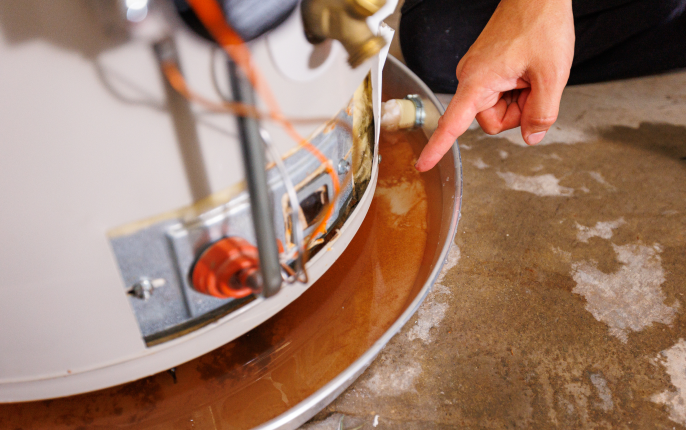
Why Old Tanks Fail
An inside look at how sediment buildup robs efficiency and causes tank failure.
Your Problem, Solved Fast
Proudly serving the greater Phoenix/Scottsdale and Oklahoma City areas—your trusted source for fast, hassle-free toilet and water heater replacements.



